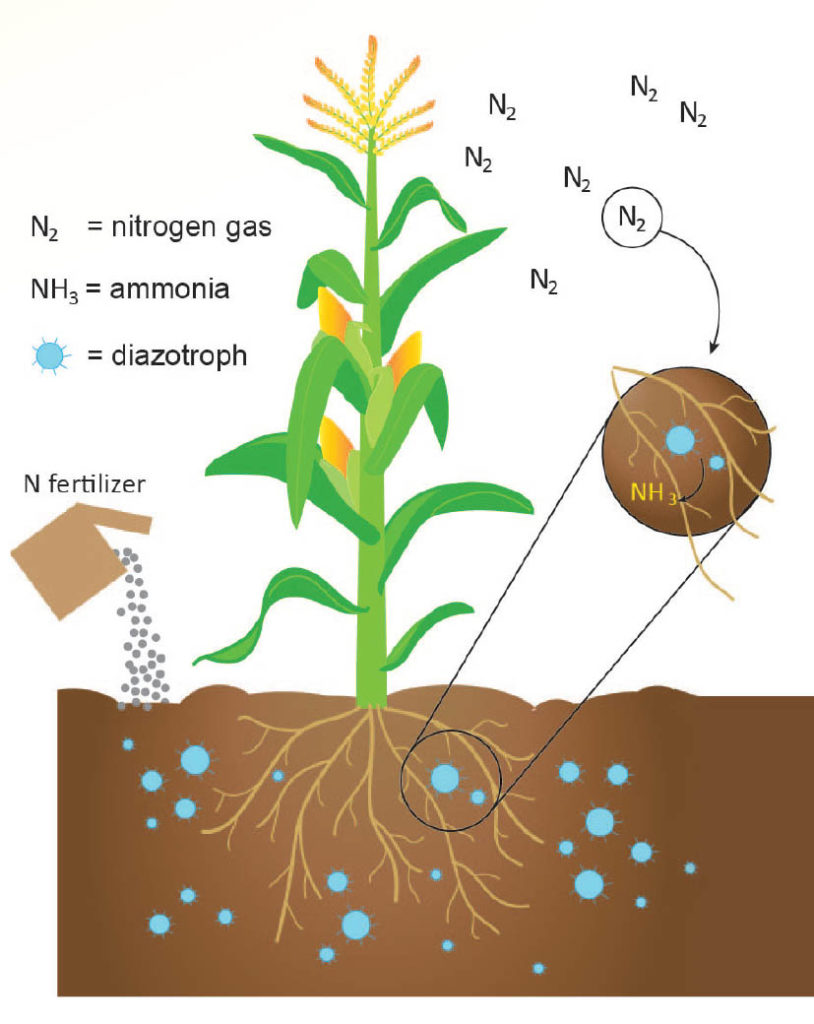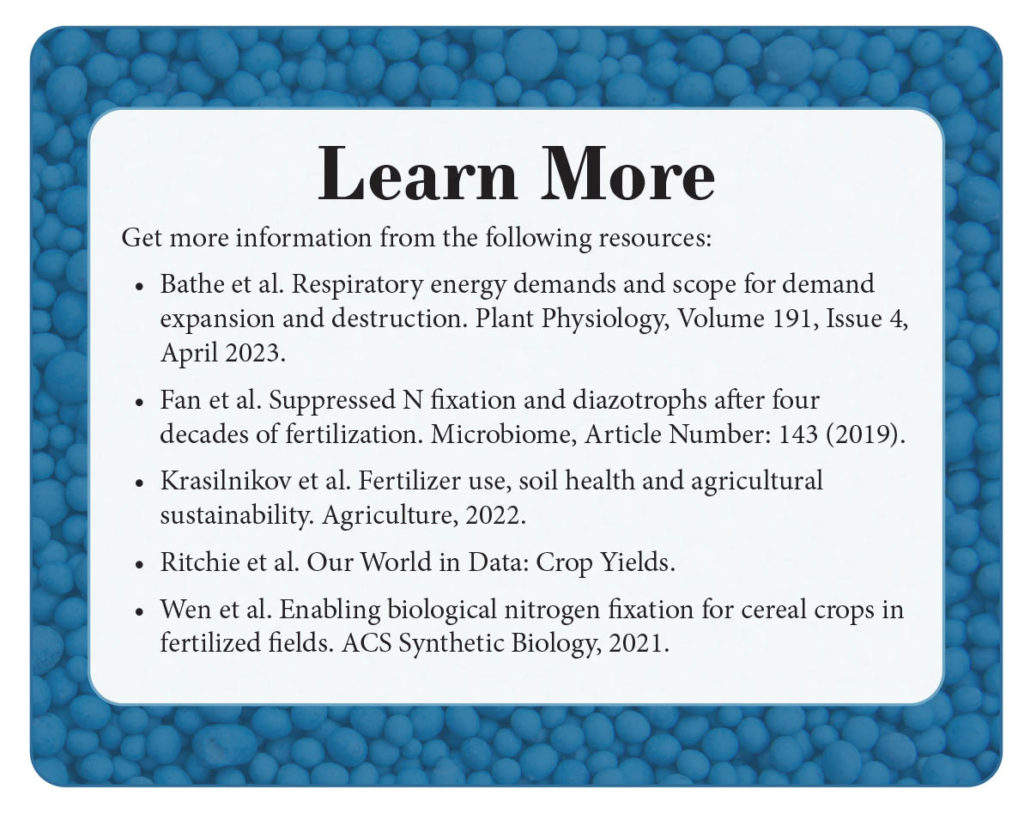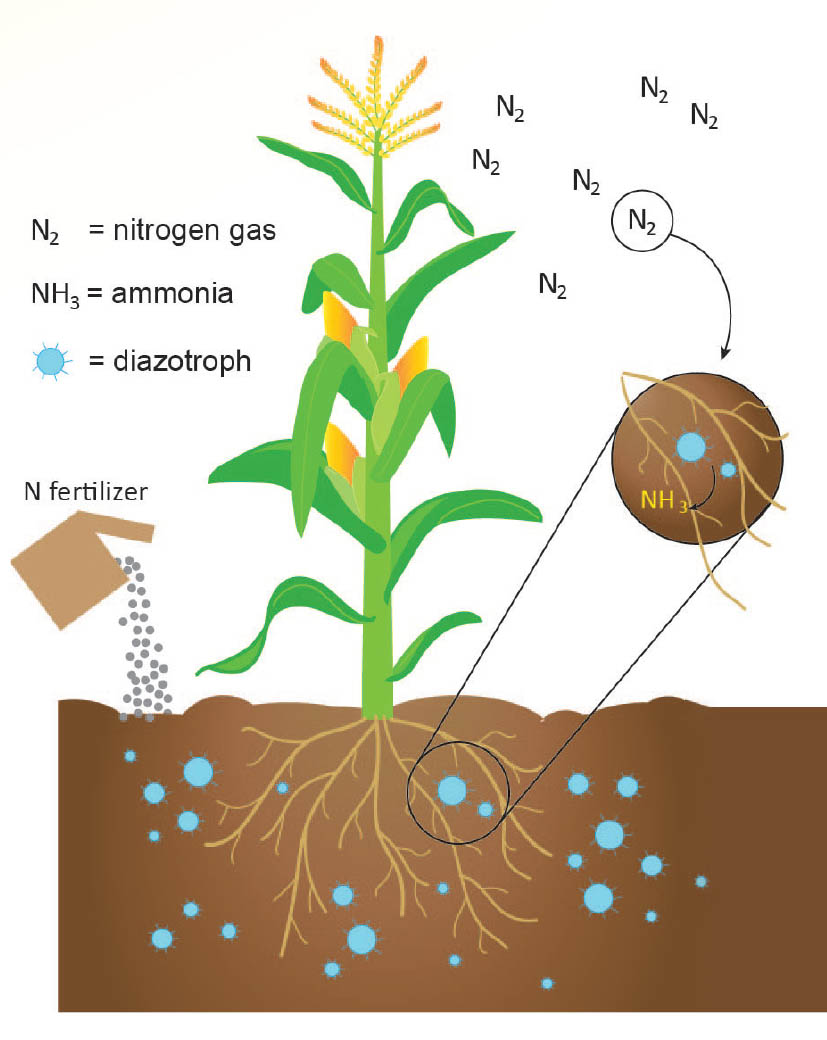By Kristen Van Gelder
The invention and use of chemical nitrogen fertilizer starting in the early 20th century have led to a phenomenal gain in agricultural output. For example, typical maize yields in the U.S. have risen from 2 tonnes per hectare in the early 1940s to about 11 tonnes per hectare today — a 450% increase that is in large part due to use of chemical nitrogen fertilizers.
Chemical fertilizers are also the driving force behind the surge in global population. Without chemical fertilizers, farming would fail to feed half of today’s world.
Despite their great benefits, chemical fertilizers come with significant environmental consequences. The process of making chemical fertilizers is energy-intensive, depends on fossil fuels and generates 3% to 5% of global carbon emissions. This is equivalent to the emissions from aviation and commercial shipping combined. Fertilizers also pollute the air and contaminate water supplies. In addition, fertilizers can eventually lead to declining soil health, including soil acidification and loss of beneficial soil-dwelling organisms that favor plant growth and health.
While appropriate chemical nitrogen fertilizer use can increase both nitrogen and organic carbon in the soil, excessive use tends to decrease organic carbon proportionally to nitrogen increase. Sustaining yields in poor soils then requires more fertilizer and water as well as more intensive pest management.
BIOLOGICAL NITROGEN FIXATION
There is much interest among both scientists and farmers in finding ways to replace chemical nitrogen fertilizers at least partially with biological nitrogen fixation (BNF). BNF refers to the process of atmospheric nitrogen gas being converted to ammonia by certain bacteria known as diazotrophs. In healthy soils, free-living diazotrophs and plants can work together in a mutually beneficial relationship.
Plants release sugars and other compounds into the soil from their roots, which can be used as a food source for bacteria. Bacteria release nitrogen into the soil, particularly after they die, which can be taken up by the plant roots (see Figure 1). However, after decades of intensive nitrogen fertilizer use, the diversity of bacterial communities in the soil can be greatly reduced.

For example, a 2019 study by Fan and colleagues published in Microbiome found that over-fertilized fields tend to suppress bacterial communities with strong nitrogen fixation capabilities. Overall, this can lead to progression of soils toward less BNF and therefore a greater need for chemical nitrogen fertilizer application.
YIELD IMPACT
While returning to nature to supply nitrogen can positively impact soil health and bacterial biodiversity, the implications for farming could be negative, with yields expected to decline. So, the question that must be asked is: Can BNF replace chemical nitrogen fertilizer without severely impacting yield?
Let’s look at an example with maize. In the United States, around 200 kilograms per hectare of chemical nitrogen fertilizer is typically applied to maize, of which the plants take up and utilize about 60% (120 kilograms per hectare). This gives a typical grain yield of about 11 tonnes per hectare. If diazotrophs were to replace all 120 kilograms of nitrogen, the resulting yield is estimated to be between 2 and 6 tonnes per hectare. This roughly 45% to 80% yield decrease is a result of limited resources (mainly sugar, the end-product of photosynthesis) in the plant. More of this sugar must go to supporting diazotroph communities when nitrogen fertilizer is replaced with BNF, so less sugar is available for grain growth.
FINDING A BALANCE
Given the limitations of sugar production by photosynthesis in plants and diazotrophs’ sugar requirement to fix nitrogen, with our current agricultural practices and global food demands, it is not feasible to fully replace chemical nitrogen fertilizers. However, there are still promising outcomes for partially replacing nitrogen fertilizers with BNF.
A 2021 study in maize by Wen and colleagues that was published in ACS Synthetic Biology showed that when chemical nitrogen fertilizers were used in combination with a diazotroph strain engineered to enhance BNF, yield increased by 0.35 tonnes per hectare.
There is still much about diazotrophs, soil bacterial communities and relationships between plant roots and bacteria that is unknown. Scientists are only just starting to understand how BNF can be harnessed effectively to support crop growth. However, it is becoming clear that a combination of chemical nitrogen fertilizer and diazotroph-supported BNF can be part of the solution to sustaining the yields needed to feed an increasing population, while maintaining and improving soil health.

Get more information from the following resources:
Bathe et al. Respiratory energy demands and scope for demand expansion and destruction. Plant Physiology, Volume 191, Issue 4, April 2023.
Fan et al. Suppressed N fixation and diazotrophs after four decades of fertilization. Microbiome, Article Number: 143 (2019).
Krasilnikov et al. Fertilizer use, soil health and agricultural sustainability. Agriculture, 2022.
Ritchie et al. Our World in Data: Crop Yields.
Wen et al. Enabling biological nitrogen fixation for cereal crops in fertilized fields. ACS Synthetic Biology, 2021.
Kristen Van Gelder is a postdoctoral associate with the University of Florida Institute of Food and Agricultural Sciences in Gainesville.










